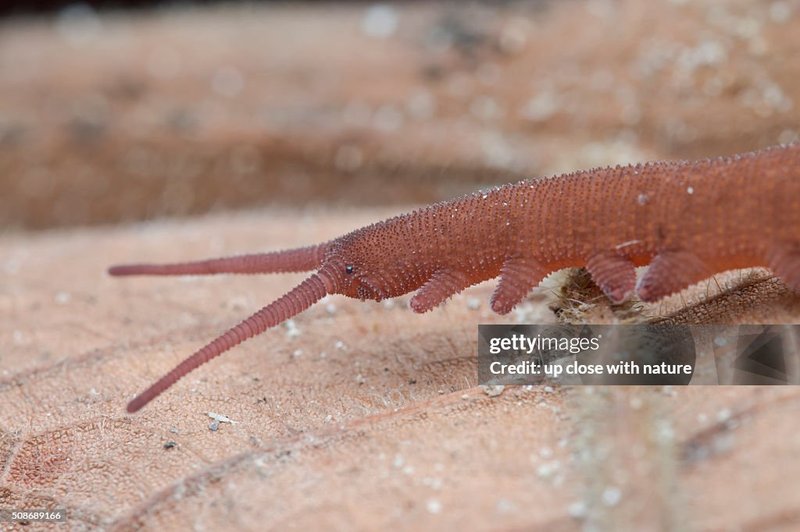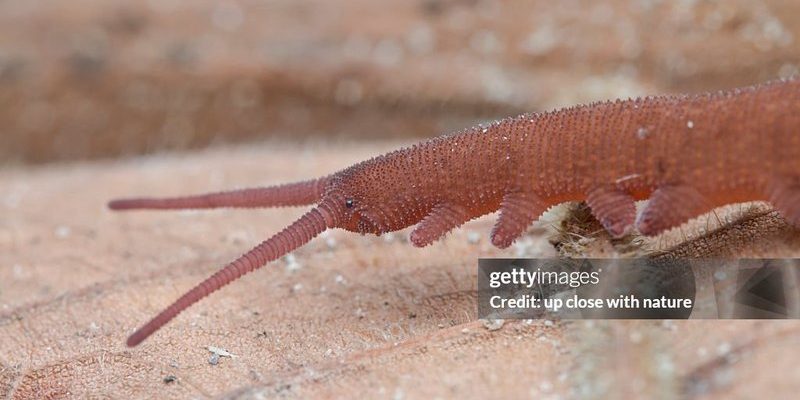
You might picture velvet worms slinking through rainforests, basking in humidity. But as we peel back the layers of their biology and habits, you’ll see that it’s not just about their surroundings. It’s about how they adapt and what they need to survive. So, grab your favorite drink, and let’s chat about the surprising world of velvet worms and their resilience in less-than-ideal climates.
Understanding Velvet Worms’ Natural Habitat
Velvet worms are often found in the lush undergrowth of rainforests, where moisture is abundant. They thrive in environments that provide the **humidity** they need to keep their delicate bodies from drying out. Typically, these creatures prefer temperatures that hover around 20 to 30 degrees Celsius (68 to 86 degrees Fahrenheit). Their natural habitat is rich in leaf litter, soil, and rotting wood—ideal for hunting insects, their favorite meal.
In these damp settings, velvet worms engage in unique behaviors that help them survive. They’re nocturnal hunters, preferring the cooler temperatures of the night to avoid dehydration. When you think of them in their natural environment, it’s easy to see why the notion of them surviving in dry climates feels so far-fetched.
What Makes Velvet Worms Vulnerable?
You might be wondering what exactly puts velvet worms at risk in dry climates. Their soft bodies are highly susceptible to desiccation, which means they can lose moisture quickly. This is where things get tricky. Velvet worms rely heavily on their **mucus** coats to retain moisture. In dry conditions, this can become a serious problem.
Additionally, their respiratory system is adapted to humid environments. They breathe through small openings called spiracles, which can become ineffective in dry air. If you’re picturing a little velvet worm gasping for air, it’s because their environment is not suited to their needs. Without sufficient moisture in the air, the worm’s biological functions begin to falter.
Adaptations for Survival
Despite their vulnerabilities, velvet worms have some tricks up their sleeves. Some species can tolerate slightly drier conditions by retreating to burrows or hidden spots where moisture is retained. Here, they can stay protected from the harsh elements.
Moreover, their ability to produce **mucus** isn’t just for moisture retention; it also helps them move and capture prey. When they find themselves in less-than-ideal conditions, this adaptability can mean the difference between thriving and merely surviving. Essentially, they create a microenvironment around themselves that can help stave off drying out, even if only for a short time.
Can They Live in Arid Regions?
The simple answer is no—they cannot permanently reside in arid regions. While they might be able to withstand short bursts of dry spells, long-term survival in a dry climate is not feasible for velvet worms. They need that consistency of humidity to prevent their bodies from drying out completely.
However, some studies suggest that there are a few species that have begun to adapt to slightly less humid environments. This raises a fascinating question about evolution and adaptability. Imagine velvet worms slowly evolving the ability to tolerate drier conditions. It’s like watching an ancient race adapt to modern challenges.
Comparison with Other Creatures
If you’re familiar with other unique creatures, think about how they manage to survive in dry climates. For example, camels can store water and have specialized features to thrive in arid settings. Velvet worms, on the other hand, don’t have those adaptations.
To give you a clearer picture, here’s a quick comparison:
| Creature | Habitat | Moisture Management |
| Velvet Worm | Moist rainforests | Relies on mucus and humidity |
| Camel | Deserts | Stores water, adapted to extremes |
| Cacti | Deserts | Stores water in tissues |
As you can see, the strategies these creatures employ are quite distinct, highlighting the unique needs of velvet worms.
So, can velvet worms survive in dry climates? The reality is that while they possess some adaptability, they are fundamentally tied to moist environments. Their soft bodies and unique biology make it nearly impossible for them to thrive in arid regions over the long haul. Every creature has its niche, and for velvet worms, that niche is found beneath the lush canopy of tropical and subtropical forests, where moisture abounds.
It’s fascinating to think about the delicate balance of nature and how these creatures have evolved to fill their specific roles. If you ever find yourself exploring a rainforest, keep an eye out for these enchanting little beings—you might just catch a glimpse of their soft, velvety form gliding through the underbrush, reminding us of the wonders of life and adaptation.

